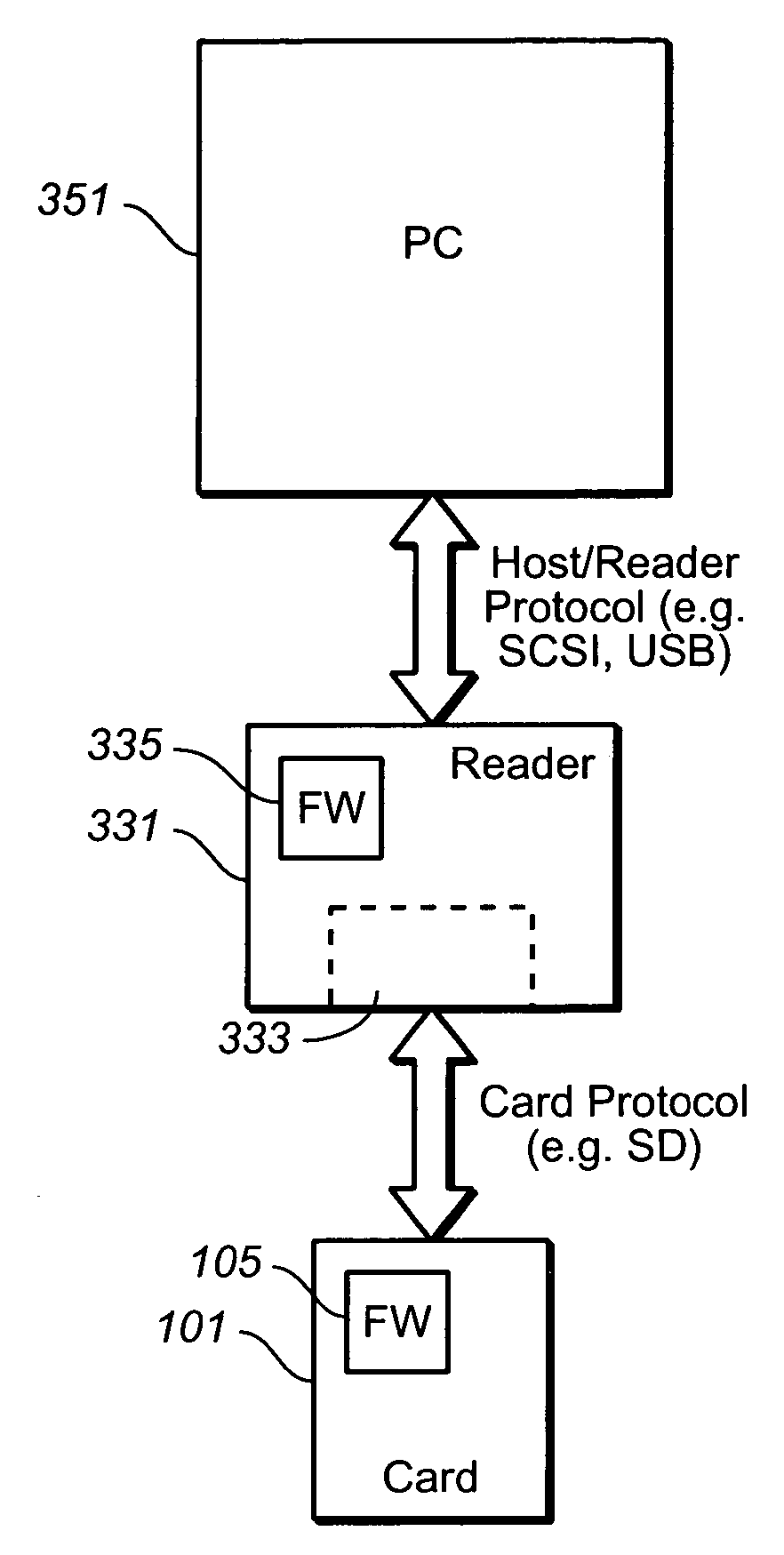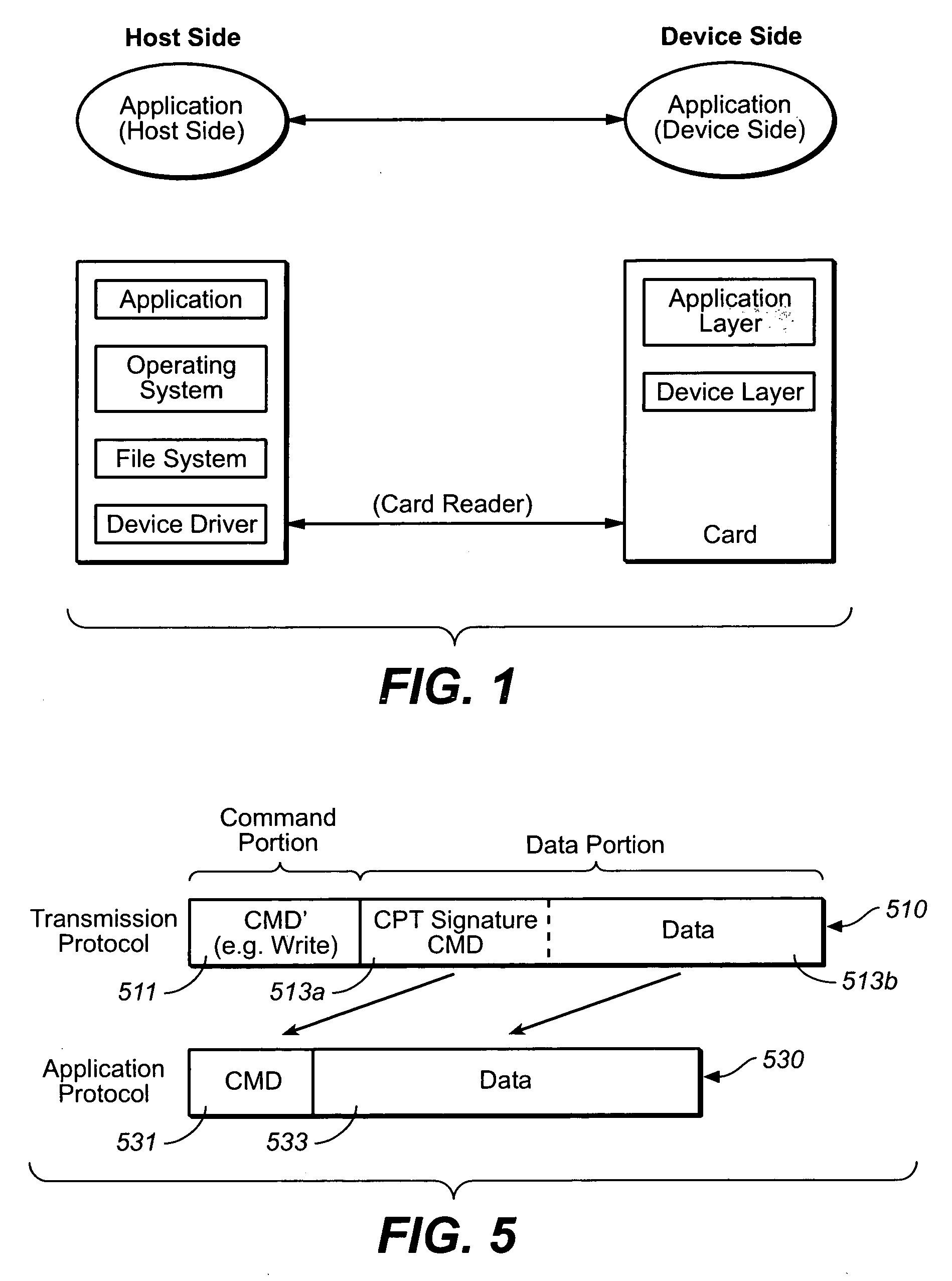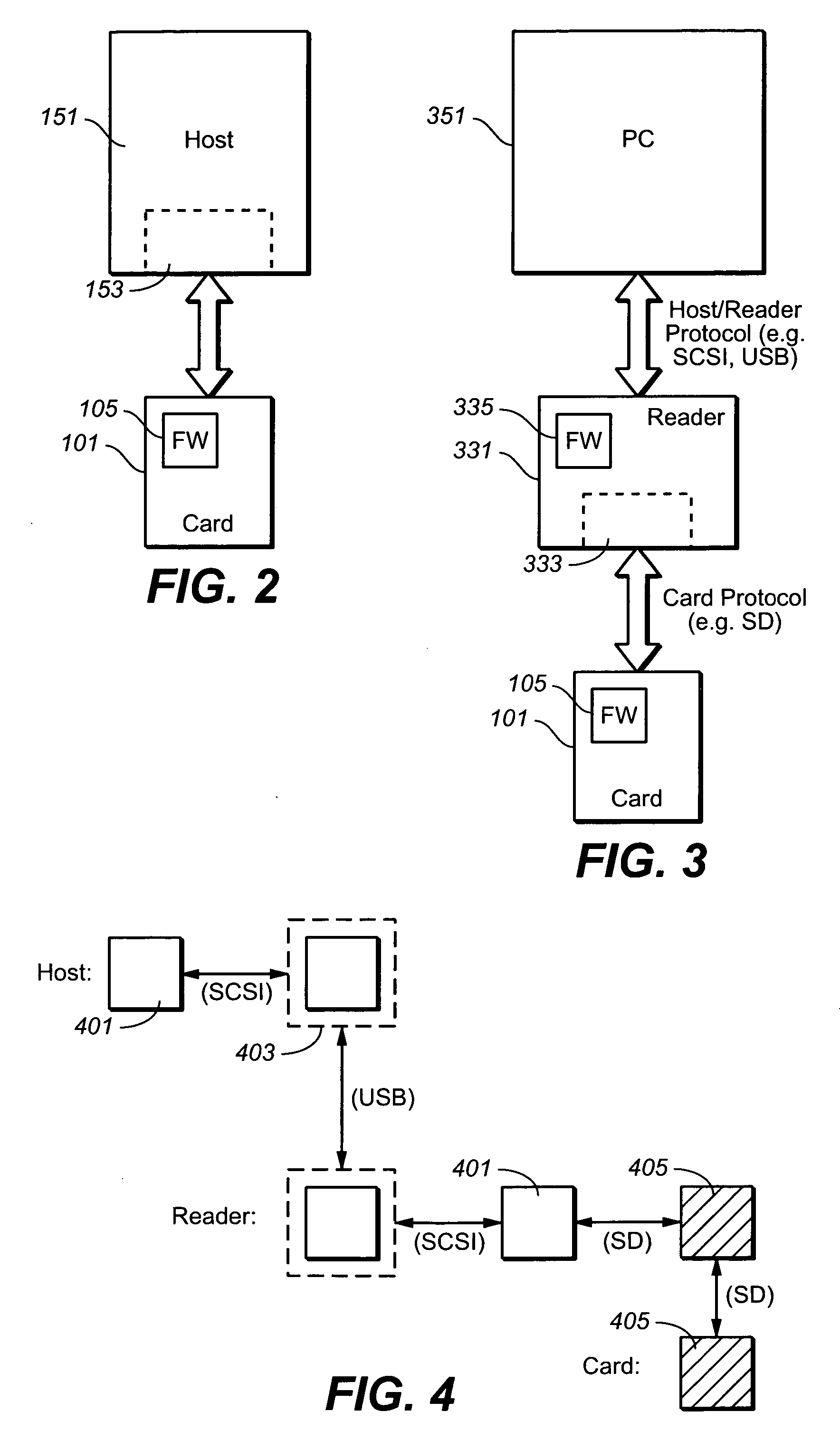Media card command pass through methods
- Summary
- Abstract
- Description
- Claims
- Application Information
AI Technical Summary
Benefits of technology
Problems solved by technology
Method used
Image
Examples
first exemplary embodiment
[0057] The first exemplary embodiment is implemented at the file level on the host side and will be used to illustrate various aspects of the present invention; on the card side, the implementation is largely the same whether host side is implemented at the file or device driver level. When reference is made to a particular application for this embodiment, it will be given in the context of a hidden partition on the memory card, where the memory is divided into publicly accessible portion and a private, or “hidden”, portion. Such an arrangement is described in U.S. provisional patent application 60 / 638,804, filed Dec. 21, 2004, which is hereby incorporated by reference, although most the details are not so limited. The host side portion, in particular, the device driver, will be described first, followed by card details. Other examples of the use of a hidden partition are described in the following patent applications, all of which are hereby incorporated by reference: Ser. No. 11 / 0...
second exemplary embodiment
[0141] The first example was implemented at the file level. The various aspects of the present invention can also be implemented at the device driver level, initiating read and write operations by sending requests to the device driver, for example the Windows Standard Storage driver if the host uses the Windows operating system. This implementation of the command pass through method communicates directly with the device and does not have the file system overhead. However, this method may require administration rights. The host's application can try and use this method as first choice and move to file system operations if it fails. An interface function can be used to select between the methods and to initialize the communication pipe accordingly. The client application would call this command before any other operation. If the application lacks the proper administrator rights, working with this method will result an exception, which can be treated according to exception handling cod...
third exemplary embodiment
[0193] The third exemplary embodiment is implemented at the file level, as was the first exemplary embodiment. Here the discussion will focus more on the details of what is placed in the file on the host side. Since device specific commands are embedded within file, there is no way to harm file system specific data such as FAT area. From the card's point of view, the different exemplary embodiments will appear similar, the difference more being with respect to how the information is packaged on the host side. When reference is needed to a particular application, the third exemplary embodiment will be that of a secure link to a secure bus, such as that presented in U.S. provisional patent application 60 / 638,804, filed Dec. 21, 2004, which is incorporated by above.
[0194] With the file level implementation, in addition to overcoming the sort of privilege problems that may arise with device driver level implementations, it is also possible to overcome a possible need to have special ha...
PUM
 Login to View More
Login to View More Abstract
Description
Claims
Application Information
 Login to View More
Login to View More - R&D
- Intellectual Property
- Life Sciences
- Materials
- Tech Scout
- Unparalleled Data Quality
- Higher Quality Content
- 60% Fewer Hallucinations
Browse by: Latest US Patents, China's latest patents, Technical Efficacy Thesaurus, Application Domain, Technology Topic, Popular Technical Reports.
© 2025 PatSnap. All rights reserved.Legal|Privacy policy|Modern Slavery Act Transparency Statement|Sitemap|About US| Contact US: help@patsnap.com



